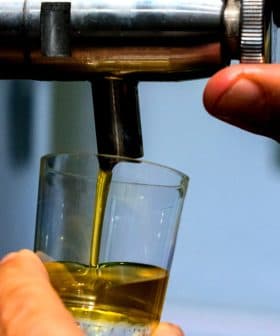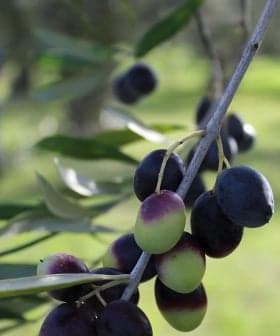Ahead of the Harvest, Olive Oil Production Costs Keep Rising
The energy crisis will dramatically raise the cost of doing business for millers. However, they will not be able to pass those increases along to consumers.
 5.0K reads
5.0K readsThe 2022 olive harvest in Italy will face challenges due to reduced yields and rising production costs, including skyrocketing energy prices. Producer associations are seeking government intervention to limit energy costs and ensure that olive oil prices remain affordable for consumers, as millers may bear the financial burden of the increasing costs.
The 2022 olive harvest in Italy will begin in the next few weeks but will be shrouded by uncertainty, with producers facing reduced yields and rising production costs.
Rising costs for raw materials, fertilizer, glass, paper and logistics are putting the sector’s resilience to the test, while skyrocketing energy and electricity prices are affecting the whole production chain.
The energy bill in some cases has grown five times, making companies consider two terrifying hypotheticals, taking on new debt or closing down.
On top of this, the first estimates for the next season show a 20 to 30 percent drop in overall olive oil yield in the country.
Given the turmoil in the European energy market caused by the Russian invasion of Ukraine, the electricity prices have exceeded €400 per megawatt hour in all significant markets. Italy is facing prices of €450 per megawatt hour.
See Also:Bulk Exports from Greece Help Fuel the Italian Olive Oil IndustryBy comparison, the average price of the previous decades was between €20 to €30 per megawatt hour.
While growers have to face the consequences of the worst drought in decades, millers will also have to cope with these unheard-of energy prices, which are expected to reach new record highs in the coming weeks when the harvest season starts, and electricity consumption reaches its maximum.
“At the moment, we are seeing costs rising between 200 and 250 percent,” Elia Pellegrino, president of the Italian olive oil millers association (AIFO), told Olive Oil Times. “Of course, that can have significant consequences for the sector, even more considering the estimates of the low yield for very important regions such as Puglia.”
Puglia, located in southeastern Italy, is by far the most relevant olive-producing region in the country, accounting for 40 to 50 percent of the overall national production.
As a result of rising production costs, some millers expect extra virgin olive oil prices to increase significantly for consumers.
“I do not think we can avoid raising the final price of the product,” Silvano Pasquinoni, a large miller in the northern Emilia-Romagna region, told Il Resto del Carlino. “There is not only the costs of energy to be considered but also the reduced production in many regions.”
“And all the other expenses to consider, such as packaging or glass,” he added. “Everything now costs twice what it used to cost.”
In response to rising costs, producer associations, including Assitol and Italia Olivicola, have asked the government to enact extraordinary measures to limit energy costs.
“Our industry, which has always been characterized by low-profit margins, has been working for a long time to lower fixed costs,” said Anna Cane, president of the olive oil group of Assitol. “But now companies cannot stop this wave of rising costs. It is almost impossible to leave the final price of the product on the market exempt from such increases in energy and raw materials.”
Assitol added that authorities would need to work closely with large food retailers – who are responsible for 70 percent of olive oil sales in Italy – to keep olive oil prices within reach of regular consumers.
The high variability of extra virgin olive oil prices on the shelf has significantly impacted the whole sector. The largest retailers saw their overall sales boosted by consumers’ interest in their low-priced olive oil offers. Such offers traditionally target extra virgin olive oil because of the special place it holds in the shopping cart of the Italian family.
Therefore, higher extra virgin olive oil prices might not translate into larger payments for producers and millers.
“Should extra virgin olive oil be sold at €6.00 or €6.50 per liter, that could probably help producers a bit,” Pellegrino said. “Still, experience tells us that when bulk olive oil prices rise significantly, most of that product risks not being sold. A higher price could greatly affect sales.”
He added that the rising cost of living in Italy likely meant consumers could not pay higher prices for olive oil.
As a result of the harvest outlook and Italy’s current macroeconomic situation, millers are likely to bear most of the financial burden. “They will have to buy olives [from growers] based on a hypothetical market price which will not fuel a relevant sales volume,” Pellegrino said.
“The disproportionate rise of the energy costs risks making olive oil production and transformation activities economically unsustainable, as they affect companies which have already been impacted by a prolonged crisis, from the climate emergency to the water scarcity,” said Gennaro Sicolo, president of Italia Olivicola.
“The energy bill in some cases has grown five times, making companies consider two terrifying hypotheticals, taking on new debt or closing down,” he added.
AIFO, Assitol and other stakeholders in the production chain will meet regularly in the weeks ahead of harvest to try to counteract such challenges.
“We need to rethink the product chain in terms of the growing integration of its specific sectors,” Pellegrino said. “Olive oil millers, producers, bottlers and retailers should take a step forward and create mutuality and solidarity both when the challenges are tough and when things go well.”
“We all understand that when only one of the production chain sectors is penalized, there is no benefit for anyone, and imbalances grow in the system,” he added.
Given the rainfall scarcity, which severely affected the various phases of olive development, several Italian millers are planning to open their facilities with some delay in the usual scheduling.
There is hope that some rainfall will spread in the country between September and October. Waiting could translate into larger yields, as more time is given to the olives to accumulate oil.
“Talking as an entrepreneur, I would wait a bit wherever possible,” Pellegrino said. “If there is no special urgency, such as an early harvest caused by the attack of the olive fruit fly, it could be advisable to wait, given the very low yields to be expected if olives are harvested very early.”
“This year might appear extraordinarily complex, but we started to experiment with more integration among the different actors of the production chain a long time ago,” he concluded. “We are now sitting at the table to discuss solutions to such challenging times. We have hope that things will soon start improving.”
Share this article









